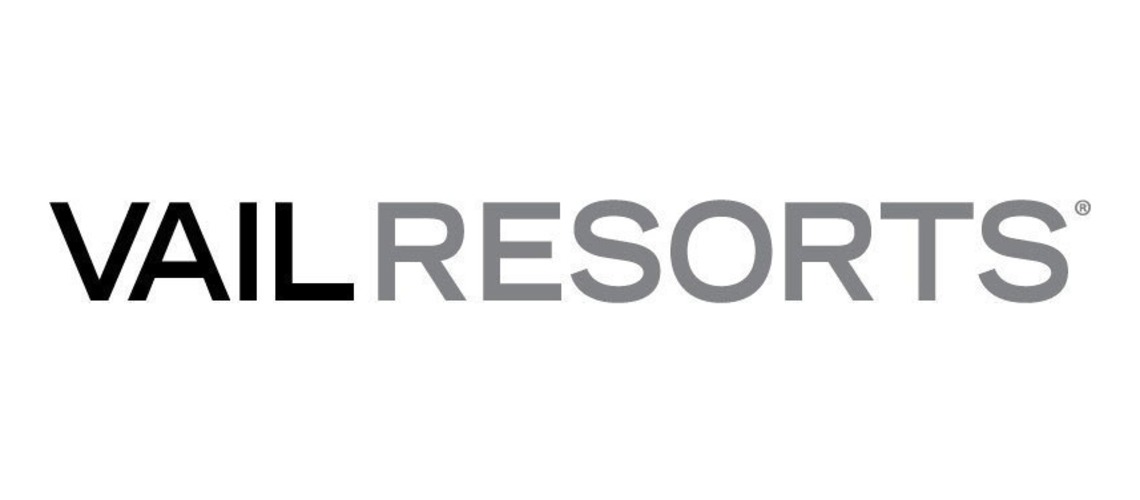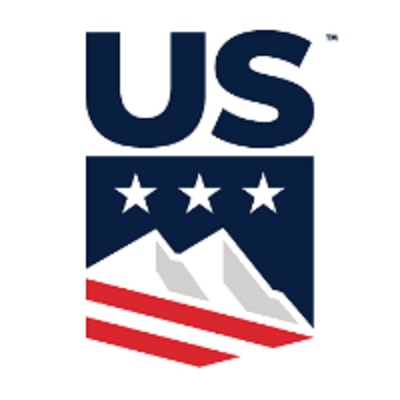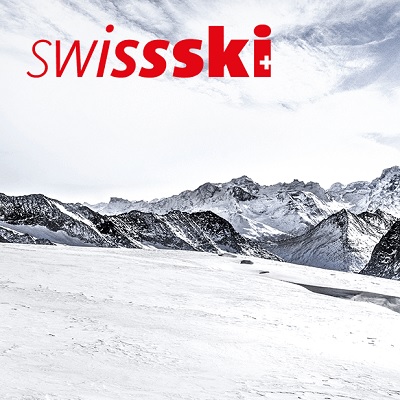Vail Resorts Reports Fiscal 2022 Second Quarter Results

Vail Resorts, Inc. has reported results for the second quarter of fiscal 2022 ended January 31, 2022 and provided the Company's ski season-to-date metrics through March 6, 2022, both of which were negatively impacted by COVID-19 and related limitations and restrictions.
Highlights
- Net income attributable to Vail Resorts, Inc. was $223.4 million for the second fiscal quarter of 2022 compared to net income attributable to Vail Resorts, Inc. of $147.8 million in the same period in the prior year. The increase is primarily due to the greater impact of COVID-19 and related limitations and restrictions on results in the prior year. Net income attributable to Vail Resorts, Inc. in the second quarter of fiscal year 2020 was $206.4 million.
- Resort Reported EBITDA was $397.9 million for the second fiscal quarter of 2022, compared to Resort Reported EBITDA of $276.1 million for the second fiscal quarter of 2021. The increase is primarily due to the greater impact of COVID-19 and related limitations and restrictions on results in the prior year. Resort Reported EBITDA for the second quarter of fiscal year 2020 was $378.3 million.
- Results improved in January and February relative to results through the peak holiday period, with season-to-date total skier visits up 2.8% and total lift revenue up 10.3% through March 6, 2022 compared to the fiscal year 2020 season-to-date period through March 8, 2020. Ancillary lines of business continue to experience decreased revenue versus the comparable period in fiscal 2020, particularly in food and beverage, given the disproportionate impact related to numerous operational restrictions related to COVID-19 and staffing challenges.
- The Company updated its fiscal 2022 guidance range and is now expecting Resort Reported EBITDA to be between $813 million and $837 million. The guidance range includes an estimated $13 million of Resort Reported EBITDA from the recently acquired operations of Seven Springs, Hidden Valley and Laurel Mountain resorts (together, the "Seven Springs Resorts") for the period from the transaction closing on December 31, 2021 through the end of the fiscal year, partially offset by $6 million of related acquisition and integration expenses.
- The Company is making investments in the guest experience for fiscal 2023 by significantly increasing compensation for seasonal frontline staff. For the 2022/2023 North American ski season, the Company will be increasing its minimum wage to $20 per hour, while maintaining all career and leadership wage differentials to provide a significant increase in pay to all of its hourly employees. The Company will also be making a substantial investment in its human resource department to support a return to full staffing and deliver a better employee experience. The increase in wages and the return to normal staffing levels will represent an approximately $175 million increase in expected labor expense in fiscal 2023 compared to fiscal 2022 expected labor expense.
- In addition, as previously announced, the Company is investing $327 million to $337 million of capital in calendar year 2022 to expand capacity at 14 resorts with 21 new lifts and a major terrain expansion for the upcoming season.
- The Company's Board of Directors approved an increase in the quarterly cash dividend to $1.91 per share beginning with the dividend payable on April 14, 2022 to shareholders of record as of March 30, 2022.
Unless otherwise noted, the commentary on results for the three months ended January 31, 2022 includes the results of our recent acquisition of the Seven Springs Resorts prospectively from the acquisition date of December 31, 2021.
Commenting on the Company's fiscal 2022 second quarter results, Kirsten Lynch, Chief Executive Officer, said, "We are pleased with our financial performance for the quarter. Visitation trends and demand for the experience at our resorts remain encouraging, particularly with destination guests, with results improving post-holidays as conditions improved, more terrain was opened and the impact of the COVID-19 Omicron variant receded. As expected, results for the quarter significantly outperformed results from the prior year, due to the greater impact of COVID-19 and related limitations and restrictions on results in the prior year period.
"The 2021/2022 North American ski season got off to a slow start. The confluence of storm cycles, staffing challenges and the spike in Omicron variant cases created challenges through the holiday period impacting our resorts' ability to fully open terrain as planned and negatively impacting the guest experience during that time. Despite numerous measures taken ahead of the season, including an investment in wages, available staffing was below targeted levels heading into the holidays, consistent with challenges faced by the broader travel and leisure industry at that time. During the holidays, COVID-19 cases associated with the Omicron variant dramatically accelerated, impacting both guest travel plans and staffing exclusions, despite having a vaccinated workforce. At some resorts, more than 10% of our employees were unable to work due to COVID-19 at one time. To address these challenges, the Company increased hourly compensation during the holidays and for the remainder of the ski season at a cost of $20 million in fiscal 2022.
"Following the holiday period, the experience across our resorts improved markedly, with better snowfall, a stabilization and ultimately reduction of cases of COVID-19 and overall better staffing, allowing us to open terrain across our resorts that was close to normal levels for that time period. Throughout the quarter, we experienced relative strength in destination visitation and lift ticket sales, particularly at our western U.S. ski resorts, which exceeded our expectations in January in particular. Whistler Blackcomb was, as anticipated, disproportionately impacted by COVID-19 related travel restrictions, creating challenging results for U.S. destination and international visitation to the resort. Excluding the Seven Springs Resorts, total visitation for the quarter increased 2% compared to the second fiscal quarter of 2020.
"Relative to the second fiscal quarter of 2020, our ancillary lines of business experienced revenue declines, particularly in food and beverage, which was disproportionately impacted by numerous operational restrictions associated with COVID-19 and overall staffing challenges. Resort net revenue for the second fiscal quarter of 2022 decreased 2% relative to the comparable period in fiscal year 2020, primarily as a result of the headwinds in our ancillary lines of business and approximately $33 million of pass revenue that would have been recognized in the second fiscal quarter of 2022, but was deferred to the third fiscal quarter as a result of delayed openings for a number of our resorts. Our lodging business experienced strong results during the quarter, with average daily rates ("ADR") exceeding our expectations, partially offset by lower than expected occupancy rates, particularly during the early season.
"Relative to the second fiscal quarter of 2020, Resort Reported EBITDA increased 5% despite the challenging early season conditions and COVID-19 related dynamics. Resort Reported EBITDA margin for the second quarter of fiscal 2022 was 43.9%, an increase from 40.9% in the second quarter of fiscal 2020."
Season-to-Date Metrics through March 6, 2022 & Interim Results Commentary
The Company reported certain ski season metrics for the period from the beginning of the ski season through March 6, 2022, compared to each of the two prior year periods through March 7, 2021 and March 8, 2020, respectively. Given the significant impacts of COVID-19 in the prior year period, including significant capacity restrictions that limited skier visits and ancillary revenue, the Company is also providing metrics relative to the comparable fiscal year 2020 season-to-date period, which was prior to our announcement to close our resorts on March 15, 2020 for the remainder of the 2019/2020 season. The reported ski season metrics are for our North American destination mountain resorts and regional ski areas, and exclude the results of our recently acquired Seven Springs Resorts and our Australian ski areas in all periods. The reported ski season metrics include growth for season pass revenue based on estimated fiscal year 2022 North American season pass revenue compared to both fiscal 2021 and fiscal 2020 North American season pass revenue. The data mentioned in this release is interim period data and is subject to fiscal quarter end review and adjustments.
- Season-to-date through March 6, 2022, total skier visits were up 11.7% compared to the prior year season-to-date period and up 2.8% compared to the fiscal year 2020 season-to-date period.
- Season-to-date total lift ticket revenue, including an allocated portion of season pass revenue for each applicable period, was up 21.0% compared to the prior year season-to-date period and up 10.3% compared to the fiscal year 2020 season-to-date period.
- Season-to-date ski school revenue was up 60.2% and dining revenue was up 75.7% compared to the prior year season-to-date period. Relative to the comparable period in fiscal year 2020, ski school revenue and dining revenue were down 8.9% and down 27.0%, respectively. Retail/rental revenue for North American resort and ski area store locations was up 40.7% compared to the prior year season-to-date period, and down 2.8% versus the comparable season-to-date period in fiscal year 2020.
Commenting on the season-to-date metrics, Lynch said, "Company performance has continued to improve throughout the post-Christmas period, with particular strength in destination visitation and lift ticket sales. Despite significant growth of our pass program this year, visitation for the season-to-date period was only modestly up 2.8% compared to fiscal 2020, given the Company's strategy to shift lift ticket guests into an advance commitment pass product. Whistler Blackcomb was negatively impacted by COVID-19 related travel restrictions, creating challenging results for U.S. destination and international visitation to the resort. The ancillary lines of business continue to experience revenue declines, particularly in food and beverage, which is disproportionately impacted by numerous operational restrictions associated with staffing and COVID-19."
Lynch continued, "It is important to highlight that our season pass unit growth of 47% for fiscal year 2022 created significant revenue stability in a period with challenging early season conditions and COVID-19 impacts. The growth in pass units did not drive dramatic increases in visitation, as the Company is shifting lift ticket guests into advance commitment products. In fact, the growth we saw in visitation in the period ending March 6, 2022, compared to fiscal 2020, occurred on weekdays and non-holiday periods, which were up approximately 9% in visits, compared to weekend and holiday periods, which were approximately flat in visits. We also saw peak daily visitation at our resorts during the period, very consistent with previous years. For the season-to-date period ending March 6, 2022, 69% of our visits came from season pass holders compared to 56% of visits in the same period in fiscal year 2020. We remain committed to our strategy to move lift ticket purchasers into advance commitment products, which offers benefits to our guests, and stability to our employees, our communities and our Company.
Operating Results
A more complete discussion of our operating results can be found within the Management's Discussion and Analysis of Financial Condition and Results of Operations section of the Company's Form 10-Q for the second fiscal quarter ended January 31, 2022, which was filed today with the Securities and Exchange Commission. The following are segment highlights:
Mountain Segment
- Total lift revenue increased $90.8 million, or 21.1%, compared to the same period in the prior year, to $521.6 million for the three months ended January 31, 2022, primarily due to an increase in pass product revenue and an increase in non-pass lift ticket purchases. Pass product revenue, although primarily collected prior to the ski season, is recognized in the Consolidated Condensed Statements of Operations throughout the ski season on a straight-line basis using the skiable days of the season to date relative to the total estimated skiable days of the season. Challenging early season conditions during the early portion of the 2021/2022 North American ski season resulted in delayed openings for a number of our resorts and, as a result, we expect to recognize approximately $33 million of pass revenue during the three months ending April 30, 2022 that would have otherwise been recognized during the three months ended January 31, 2022.
- Ski school revenue increased $35.7 million, or 63.3%, dining revenue increased $21.8 million, or 67.7%, retail/rental revenue increased $36.7 million, or 40.7%, and other revenue increased $7.4 million, or 22.7%, each primarily due to fewer COVID-19 related limitations and restrictions on our North American winter operations as compared to the prior year, as well as an increase in demand over the prior year.
- Operating expense increased $86.1 million, or 23.9%, which was primarily attributable to increased variable expenses associated with increases in revenue, and the impact of cost discipline efforts in the prior year associated with lower levels of operations, including limitations, restrictions and closures resulting from COVID-19.
- Mountain Reported EBITDA increased $106.0 million, or 37.5%, for the second quarter compared to the same period in the prior year, which includes $5.4 million of stock-based compensation expense for the three months ended January 31, 2022 compared to $5.5 million in the same period in the prior year.
Lodging Segment
- Lodging segment net revenue (excluding payroll cost reimbursements) for the three months ended January 31, 2022 increased $29.8 million, or 73.9%, as compared to the same period in the prior year, primarily as a result of fewer COVID-19 related limitations and restrictions as compared to the prior year, as well as an increase in demand and ADR compared to the prior year.
- Lodging Reported EBITDA for the three months ended January 31, 2022 increased $15.8 million, or 244.6%, for the second quarter compared to the same period in the prior year, which includes $1.0 million of stock-based compensation expense for both the three months ended January 31, 2022 and 2021.
Resort - Combination of Mountain and Lodging Segments
- Resort net revenue increased $222.0 million, or 32.4%, compared to the same period in the prior year, to $906.4 million for the three months ended January 31, 2022.
- Resort Reported EBITDA was $397.9 million for the three months ended January 31, 2022, an increase of $121.8 million, or 44.1%, compared to the same period in the prior year, which includes $2.6 million of acquisition and integration related expenses which are recorded within Mountain other operating expense.
Total Performance
- Total net revenue increased $221.9 million, or 32.4%, to $906.5 million for the three months ended January 31, 2022 as compared to the same period in the prior year.
- Net income attributable to Vail Resorts, Inc. was $223.4 million, or $5.47 per diluted share, for the second quarter of fiscal 2022 compared to net income attributable to Vail Resorts, Inc. of $147.8 million, or $3.62 per diluted share, in the second fiscal quarter of the prior year. Additionally, fiscal 2022 second quarter net income included the after-tax effect of acquisition and integration related expenses of approximately $2.0 million.
Return of Capital
Commenting on capital allocation, Lynch said, "Our liquidity position remains strong. Our total cash and revolver availability as of January 31, 2022 was approximately $2.0 billion, with $1.4 billion of cash on hand, $417 million of U.S. revolver availability under the Vail Holdings Credit Agreement and $214 million of revolver availability under the Whistler Credit Agreement. As of January 31, 2022, our Net Debt was 2.1 times trailing twelve months Total Reported EBITDA. We are pleased to announce that our Board of Directors has declared a quarterly cash dividend on Vail Resorts' common stock of $1.91 per share. The dividend will be payable on April 14, 2022 to shareholders of record as of March 30, 2022. Additionally, a Canadian dollar equivalent dividend on the exchangeable shares of Whistler Blackcomb Holdings Inc. will be payable on April 14, 2022 to shareholders of record as of March 30, 2022. The exchangeable shares were issued to certain Canadian persons in connection with our acquisition of Whistler Blackcomb Holdings Inc. We will continue to be disciplined stewards of our capital and remain committed to prioritizing investments in our guest and employee experience, high-return capacity expanding capital projects, strategic acquisition opportunities and returning capital to our shareholders through our quarterly dividend and share repurchase programs."
Commitment to Employees and Guests
Commenting on the Company's investments for the 2022/2023 ski season, Lynch said, "As we turn our attention to the 2022/2023 ski season and beyond, the Company will be making its largest ever investment in both its employees and its resorts, to ensure we continue to deliver our Company mission of an Experience of a Lifetime. The experience of our employees and guests is core to our business model, and the Company intends to use its financial resources and the stability it has created through its season pass program to continue to aggressively reinvest to deliver that experience. We believe our business model allows us to make these investments and achieve our short and long-term financial growth objectives."
Employee Investments
Commenting on the employee experience, Lynch said, "Our employees are the core of Vail Resorts' mission of creating an Experience of a Lifetime. We are pleased to announce a significant investment in our employees for next winter season, with an increase in the minimum hourly wage offered across all 37 of our North American resorts to $20 per hour for all U.S. employees and C$20 per hour for all Canadian employees, and an increase in wage rates for hourly employees as we maintain all leadership and career stage differentials. Roles that have specific experiences or certification as prerequisites, such as entry-level patrol, commercial drivers, and maintenance technicians will start at $21 per hour. Tipped employees will be guaranteed a minimum of $20 per hour. The Company will also be assessing targeted increases, beyond inflation, for our salaried employees and will be making a significant investment in our human resource department to ensure the right level of employee support, development and recruiting. Talent is our most important asset and our strategic priority at all levels of the Company and we expect these investments will be an important step to enhance the experience for our employees through increased hiring, retention and talent development. Our employee investments are intended to help us achieve normal staffing levels, and in turn, deliver an outstanding guest experience. The increase in wages and the return to normal staffing levels will represent an approximately $175 million increase in expected labor expense in fiscal 2023 compared to fiscal 2022 expected labor expense, including inflationary adjustments."
Capital Investments
Regarding calendar year 2022 capital expenditures, Lynch said, "We remain dedicated to delivering an exceptional guest experience and will continue to prioritize reinvesting into the experience at our resorts. We are committed to continually increasing capacity through lift, terrain and food and beverage expansion projects and are making a significant one-time incremental investment this year to accelerate that strategy. As previously announced on September 23, 2021, we are excited to be proceeding with our ambitious capital investment plan for calendar year 2022 of approximately $315 million to $325 million across our resorts, excluding one-time investments related to integration activities, employee housing development projects and real estate related projects.
"The plan includes approximately $180 million for the installation of 21 new or replacement lifts across 14 of our resorts and a transformational lift-served terrain expansion at Keystone. In addition to the two brand new lift configurations at Vail and Keystone, the replacement lifts will collectively increase lift capacity at those lift locations by more than 45%. All of the projects in the plan are subject to regulatory approvals and expected to be completed in time for the 2022/2023 North American winter season.
"The core capital plan is approximately $150 million above our typical annual capital plan, based on inflation and previous additions for acquisitions, and includes approximately $20 million of incremental spending to complete the one-time capital plans associated with the Peak Resorts and Triple Peaks acquisitions and $3 million for the addition of annual capital expenditures associated with the Seven Springs Resorts.
"We continue to remain highly focused on developing and leveraging our data-driven approach to marketing and operating the business. Our planned investments include network-wide scalable technology that will enhance our analytics, e-commerce and guest engagement tools to improve our ability to target our guest outreach, personalize messages and improve conversion. We will also be investing in broader self-service capabilities to improve guests' online experience and engagement. In addition, we have announced a $4 million capital investment plan in Vail Resorts' Commitment to Zero initiative, which includes targeted investments in high efficiency snowmaking, heating and cooling infrastructure and lighting to further improve our energy efficiency and make meaningful progress toward our 2030 goal.
"We plan to spend approximately $9 million on integration activities related to the recently acquired Seven Springs Resorts. Including one-time investments related to integration activities and $3 million associated with real estate related projects, our total capital plan is expected to be approximately $327 million to $337 million. Including our calendar year 2022 capital plan, Vail Resorts will have invested over $2 billion in capital since launching the Epic Pass, increasing capacity, improving the guest experience and creating an integrated resort network."
Outlook
Commenting on fiscal 2022 guidance, Lynch said, "Despite the challenging start to the season through the holidays, we have increased the midpoint of our Resort Reported EBITDA guidance as compared to our original guidance, demonstrating the resilience of our business model and the benefits of our advance commitment strategy. The update to guidance is primarily driven by the strong demand from destination guests at our western U.S. resorts, particularly with regard to lift ticket sales, that we expect will continue through the remainder of the season and the contribution from the Seven Springs Resorts. Additionally, our Lodging business is expected to outperform our original expectations in the remainder of the year with a strong outlook on both occupancy and ADR across our properties and the addition of the Seven Springs Resorts. The outperformance is partially offset by the challenging U.S. destination and international visitation trends at Whistler Blackcomb, the $20 million investment in front-line staff bonuses, increased wages for our summer operations and the inclusion of an estimated $6 million in acquisition and integration related expenses specific to the Seven Springs Resorts. We now expect net income attributable to Vail Resorts, Inc. for fiscal 2022 to be between $304 million and $350 million, and Resort Reported EBITDA for fiscal 2022 to be between $813 million and $837 million. We estimate Resort EBITDA Margin for fiscal 2022 to be approximately 32.9%, using the midpoint of the guidance range. The updated outlook for fiscal year 2022 assumes normal conditions and operations across our resorts for the remainder of the ski season and no incremental travel or operating restrictions associated with COVID-19 that could negatively impact our results, including for our Australian resorts in the fourth quarter. The guidance assumes an exchange rate of $0.79 between the Canadian Dollar and U.S. Dollar related to the operations of Whistler Blackcomb in Canada and an exchange rate of $0.72 between the Australian Dollar and U.S. Dollar related to the operations of Perisher, Falls Creek and Hotham in Australia."
Commenting on the outlook for fiscal 2022, Lynch said, "There are a number of dynamics related to COVID-19 and unusual weather that are negatively impacting fiscal 2022 that are important to highlight as we begin to plan for fiscal 2023. All of the estimates below assume normal conditions throughout our ski seasons, continued strength in consumer demand, consistent economic dynamics relative to what exists today and no material ongoing impacts from COVID-19.
- Travel trends at Whistler Blackcomb, our Australian resorts and our group business were all materially, negatively impacted by COVID-19 in fiscal 2022, and early season results across our resorts were depressed with challenging snowfall and conditions. Returning to normalized levels would result in estimated incremental Resort Reported EBITDA of approximately $100 million in fiscal 2022;
- The Seven Springs Resorts did not have a full year of operating results, and was impacted by acquisition and integration related expenses. Full year results with no acquisition or integration related expenses would result in estimated incremental Resort Reported EBITDA of approximately $7 million in fiscal 2022;
- Our ancillary businesses were capacity constrained in fiscal 2022 by staffing and, in the case of dining, by operational restrictions associated with COVID-19. Returning our ancillary business to normalized levels would result in estimated incremental Resort Reported EBITDA of approximately $75 million in fiscal 2022, which includes the incremental revenue and operating expense associated with normal capacity but excludes incremental labor expense. The normalized labor expense for the ancillary businesses is included in the approximate $175 million labor investment.
Offsetting the estimated $182 million of expected favorable Resort Reported EBITDA impact from returning the business to normal levels noted above relative to projected fiscal 2022 results is the approximate $175 million labor increase from fiscal 2022 to fiscal 2023 that is expected to be necessary to return the Company to normal staffing levels given the staffing shortages in fiscal 2022 and the current labor market dynamics in our resort communities. The estimates above do not take into account any fiscal 2023 projections for volume, price or expense growth, which will be evaluated and incorporated in our full year fiscal 2023 guidance that we plan to outline in September 2022.













